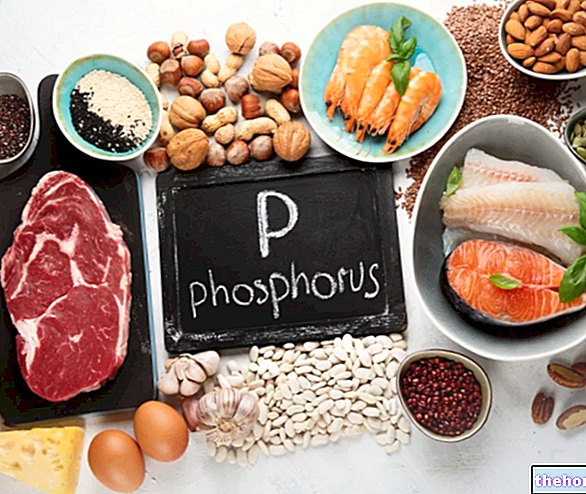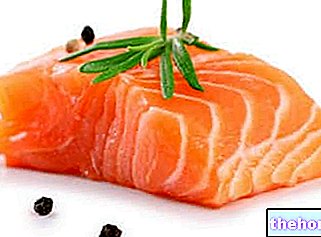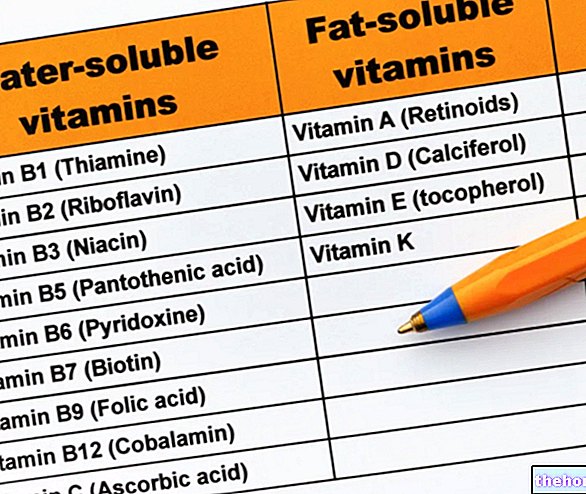PABA: general information
PABA is the acronym for para-aminobenzoic acid.
PABA is one of the vitamin-like factors; it is also commonly known as vitamin B10, due to its importance in the synthesis of folic acid (vitamin Bc or B9).

To be precise, just like pantothenic acid, the integration of PABA on the laboratory guinea pig has a notable anti-gray effect, ie it is able to oppose the loss of pigment in the animal hair; unfortunately, clinical tests have shown that the same effects are not obtainable in contrasting the enlargement of human hair.
PABA intervenes by promoting the synthesis of melanin starting from hydroxyphenylalanine (DOPA), so it can be used in the prevention of sunburn and in the alleviation of pain caused by these; in fact, para-aminobenzoic acid is a key ingredient in sunscreen creams.
PABA also appears to increase the oxygen concentration in arterial blood.
Side effects of PABA
Among the various positive characteristics, PABA also has some negative implications.
Para-aminobenzoic acid is an antagonist of sulfonamides, a category of antibiotic drugs now obsolete but which continue to be used in the treatment of nocardiosis (granulomatous infections by Nocardia - saprophytic soil bacterium). This results in the incompatibility of intake between PABA and sulfonamide drugs.
Secondly, while not defined as toxic, when administered in large doses, PABA can trigger side effects such as nausea and vomiting.
As the next paragraph shows, one of the negative aspects of PABA is also represented by its excessive chemical-physical "delicacy".
Food and anti-nutritional sources for PABA
Food sources of PABA are: cabbage, potatoes, peanuts, wheat germ, green legumes, lettuce, tomatoes and mushrooms; but above all: whole grains, brewer's yeast, liver, kidneys and molasses. Its intake with the diet is also increased by the fermentation production of the intestinal physiological bacterial microflora.
NB. PABA is destroyed when mixed with water, when cooked and when combined with ethyl alcohol.
PABA requirement
The need for PABA is estimated from 20 to 30mg / day and the deficiency can determine: vitiligo, gray hair, scleroderma, asthma, itching, psoriasis, acute joint rheumatism and rikettisiosis.
NB. The deficiency of PABA can be compensated by the dietary supplement of brewer's yeast.
PABA like marker clinical - PABAtest
Detection of PABA in the body is an important one oral and direct diagnostic technique of exocrine pancreatic function. The PABAtest measures the enzymatic activity of chymotrypsin on a synthetic substrate administered orally (N-benzoyl-l-tyrosyl) bound to PABA. Chymotrypsin cleaves the substrate releasing PABA which, after being absorbed in the intestinal mucosa and conjugated in the cells liver, is filtered by the kidneys and excreted in the urine.
In practice, the amount of PABA and / or its metabolites in the urine measures the presence of chymotrypsin secreted by the pancreas and released into the intestine.
Bibliography:
- Natural medicine. Nutrition lessons - M. Lipartiti - New Techniques - pag. 73-74
- Methods of study of gastric and pancreatic secretion - F. Di Mario, G. Del Favero - chapter of A. Malesci, A. Mariani - Piccin - pag. 171: 174
- C.herbs and legumes in the diet for health - A. Formenti, C. Mazzi - New Techniques - pag. 75-76.





.jpg)






















